The Kawasaki Ki-61 Hien; (eng:'Flying Swallow') was a Japanese World War II fighter aircraft used by the Imperial Japanese Army Air Service(IJAAS). The first encounter reports claimed Ki-61s were Messerschmitt Bf 109s with further reports claimed that the new aircraft was an Italian design, which led to the Allied reporting name of 'Antonia' then simply the name 'Tony' was assigned by the United States War Department. The Japanese Army designation was 'Army Type 3 Fighter' and was the only Japanese fighter of WW2 to use a liquid cooled, v-configuration engine.
Development
During 1938 Kawasaki acquired the licence rights for the Daimler Benz DB601A engine and successfully adapted it for production in November 1940 as the Army 'Ha-40'. Influenced by this, and not without Kawasaki's persistence and some political pressure, the Army contracted Kawasaki for the development of the new line of aircraft: the Ki-60 heavy interceptor and the Ki-61 all-purpose fighter. Though the Ki-60 project was terminated due to a lack of speed in the prototypes, Takeo Doi and his deputy Shin Owada gave now full attention to the refinements of the Ki-61, concentrating on weight reduction, maneuverability and speed. In December 1941 the first prototype took to the air, the serial production started in autumn of 1942 and the aircraft entered service as the 'Army Type 3 Fighter'. The Ki-61 was generally successful and liked by its pilots, but the complex engine proved too much for the tropical field conditions the aircraft had to face during 1943 and for the inadequate maintenance and supply situation within the IJAAS. In January 1945, B-29s raided and completely destroyed the Akashi engine plant leaving 275 Ki-61-II uncompleted fuselages without any engines. However, engineers adapted the Ha-112 14-cylinder radial engines that were available to create the Ki-100 which the Japanese Army designation was 'Goshikisen' (Go = five; shiki = type; sentoki = fighter) or 'Army Fighter Type 5'. Uncharacteristically, there was no Allied designation given to this plane when it was encountered over Japan, though it was referred to as a 'Tony' still by Allied designation.
Back to Top
Operations in the South Pacific
The new Ki-61 fighters entered service with a special training unit, the 23rd Chutai, and entered combat for first time in early 1943, during the New Guinea campaign, covering New Guinea, the Admiralty Islands, New Britain, and New Ireland. The new Japanese fighter caused some pain and consternation among Allied pilots, particularly when they found out the hard way that they could no longer go into a dive and escape as they had from lighter Japanese fighters. 5th Air Force Commander General George Kenney found his P-40s completely outclassed, and begged for more P-38s to counter the threat of the new enemy fighter. The first Sentai (Air Group/Wing) fully equipped with the Ki-61 was the 68th in Wewak, New Guinea, followed by the 78th Sentai stationed at Rabaul. Both units were sent into a difficult theatre where jungles and adverse weather conditions, coupled with a lack of spares, quickly undermined the efficiency of both men and machines. Because the Ki-61 was so new, and had been rushed into service, it inevitably suffered from teething problems. Almost all of the modern Japanese aircraft engines, especially the Ki-61's liquid-cooled engines, suffered a disastrous series of failures and ongoing problems, which resulted in the obsolescent Ki-43 still forming the bulk of the IJAAS fighter capability. Initially, this campaign went successfully for the IJAAS, but when the Allies re-organized and enhanced the combat capabilities of their air forces, they gained the upper hand against them. High non-combat losses were also experienced by the Japanese during this campaign. For example, while in transit between Truk and Rabaul, the 78th lost 18 of its 30 Ki-61s.
Back to Top
Operations over the Japanese Homeland
The Ki-61 was also utilised in Southeast Asia, Okinawa, China and as an interceptor during US bombing raids over Japanese home islands, including against Boeing B-29 Superfortresses. The Ki-61 was used in large numbers in an attempt to defend the Japanese home islands. Japan was split into Eastern, Middle and Western Defence Sectors. The 18th, 23rd, 28th, 53rd and 244th Sendais were posted to the Eastern sector, which included Tokyo. The 17th, 55th and 56th Sendais were posted to the Middle Sector, and the 59th and later 56th Sendais defended the Western Sector. The Ki-61-I could only just reach the operating altitude of the B-29s, and even then only by having its weight reduced as much as possible. Most units thus struggled to inflict any damage on the Americans, although the 244th Sendai was an exception, proving itself to be a very dangerous opponent. The Ki-61 also used in an increasingly large number of suicidal ramming attacks against B-29s. Total production accounted for 1380 Ki-61-I-Ko and Ki-61-I-Otsu aircraft manufactured, including prototypes.
Last ditch defence
The Ki-61-II was a more capable aircraft, and could operate at the B-29's cruising altitude, but it never appeared in large numbers. It also entered service at about the same time as Allied fighters aircraft began to appear over Japan for the first time, with both US naval fighters and P-51 'Mustangs' from Iwo Jima entering the fray from February 1945. A number of Ki-61s were also used in Tokkotai (kamikaze) missions launched toward the end of the war. The Ki-61 was delivered to 15th Sentai (group/wing), as well as some individual Chutaicho (junior operational commanders) in other Sentai, and even to operational training units in the IJAAS. The Ki-61-II was largely trouble-free in service except for the liquid-cooled engine which tended to overheat when idling on the ground and suffered from oil circulation and bearing problems. However, due to bombings only 378 of this fine aircraft were produced.
Back to Top

Kawasaki Ki-100 'Goshikisen'
Need for an upgrade
In October 1944 the IJAAS ordered that a 1,120 kW (1,500 hp) Mitsubishi Ha-112-II (Kinsei ["Venus"] 60 series), a 14-cylinder, two-row radial engine should be installed in the Ki-61 airframes. The need for the re-engined fighter was made yet more urgent on 19 January 1945, when a B-29 raid destroyed the engine's production plant, leaving 275 finished Ki-61s without a powerplant. Three engineers, Takeo Doi, chief engineer and head of project, his assistant Makato Owada, and head of engine systems at Kawasaki Kagamigahara, Tomio Oguchi, worked through several concepts for redesigning the Ki-61 airframe to accept the new engine before settling on a solution in which a second skin fairing was riveted to the fuselage to smooth out the airflow behind the adjustable cooling flaps and multiple exhaust stubs of the new engine cowling. At first, there were problems with the aircraft now being found to be very tail-heavy, but the removal of a large lead counterbalance, which had been placed in the Ki-61-II-KAI's rear fuselage to balance the increasingly heavy Ha-140 engine, restored the center of gravity. As a result, on 1 February 1945, the new model was flown for the first time. Without the need for the heavy coolant radiator and other fittings required for a liquid-cooled engine, the Ki-100 was 329 kg (725 lb) lighter than the Ki-61-II, reducing the wing loading from 189 kg/m² (38.8 lb/ft²) to 175 kg/m² (35.8 lb/ft²). This had an immediate positive effect on the flight characteristics, enhancing landing and takeoff qualities as well as imparting increased manoeuvrability and a tighter turning circle. The army general staff was amazed by the flight characteristics of the plane, which surpassed the Hien's in all but maximum speed (degraded by a maximum of 29 km/h [18 mph] by the larger area of the radial engine's front cowling), and the model was ordered to be put in production as the 'Goshikisen' or Army Fighter Type 5.
Back to Top
Kawasaki Ki-100 ('Goshikisen')
The emergency measure of adapting a Ki-61-II-KAI fighter to carry a Mitsubishi radial engine resulted in one of the best interceptors used by the Army during the entire war. It combined excellent power and manoeuvrability and, although its high-altitude performance against the USAAF Boeing B-29 Superfortress heavy bombers was limited by the lack of an efficient supercharger, it performed better than most other IJAAS fighters. Operational missions began in March 1945. From the first engagements, the Ki-100 performed well against the B-29 and showed itself to be equally effective against U.S. Navy carrier fighters. A new variant, the Ki-100-Ib, was produced during the last weeks of the war in time to equip five sentai for home defense duties. An overall assessment of the effectiveness of the Ki-100 rated it highly in agility, and a well-handled Ki-100 was able to outmanoeuvre any American fighter, including the formidable P-51D 'Mustangs' and the P-47N 'Thunderbolts' which were escorting the B-29 raids over Japan by that time, and was comparable in speed, especially at medium altitudes. In the hands of an experienced pilot, the Ki-100 was a deadly opponent and, together with the Army's Ki-84 and the Navy's Kawanishi N1K-J , were the only other Japanese fighters being able to defeat the latest Allied types.
Back to Top
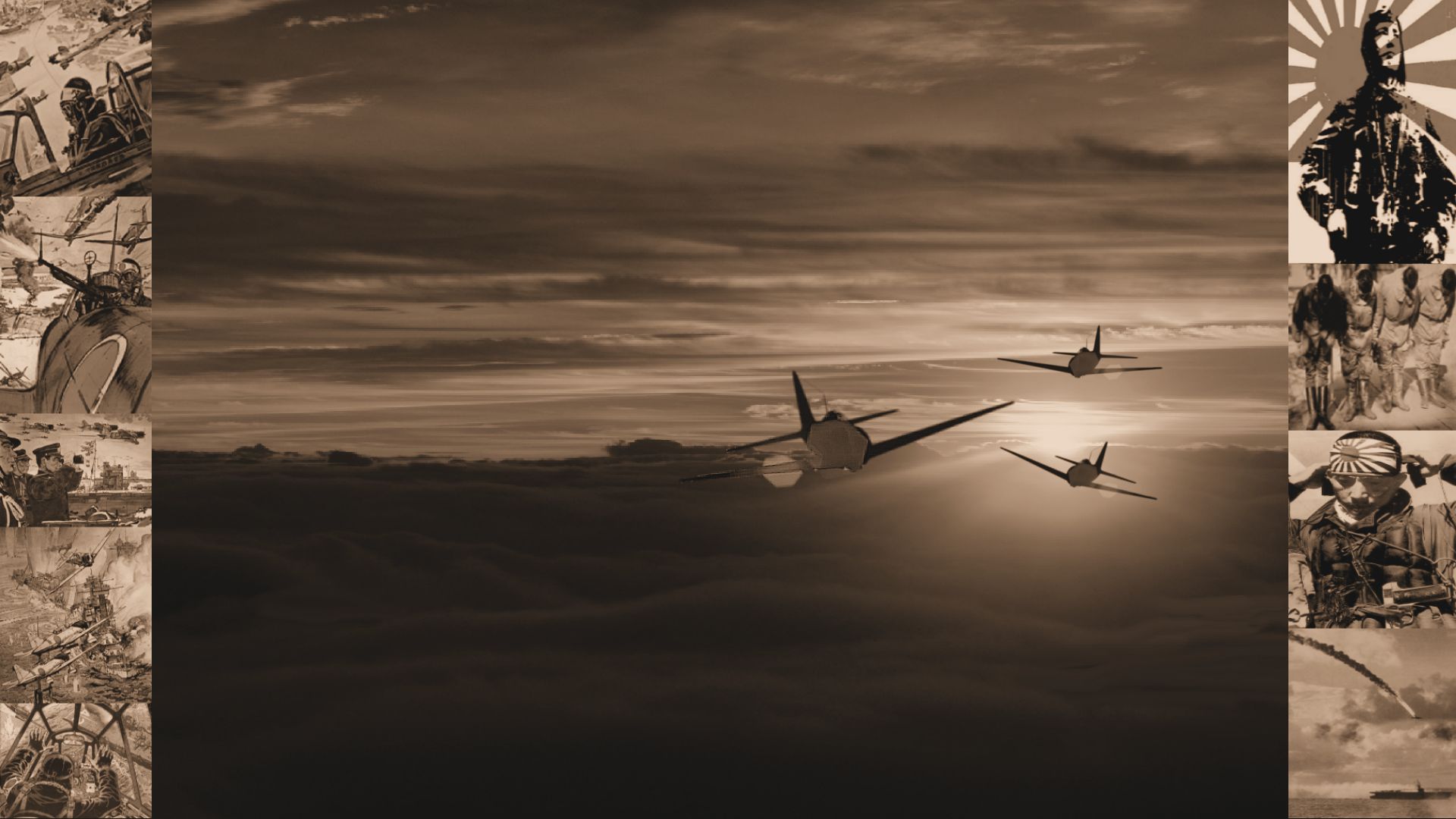


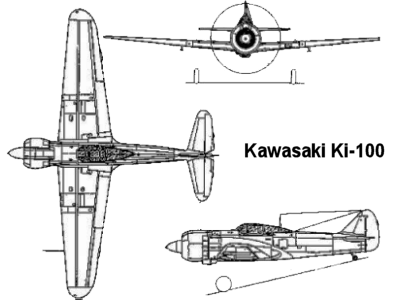


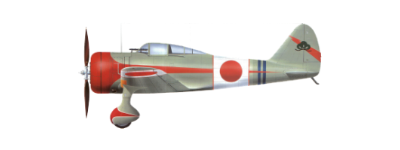 Ki-27
Ki-27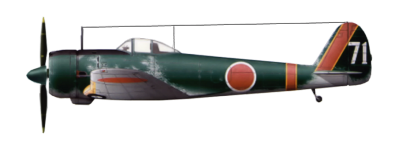 Ki-43 Hayabusa
Ki-43 Hayabusa Ki-44 Shoki
Ki-44 Shoki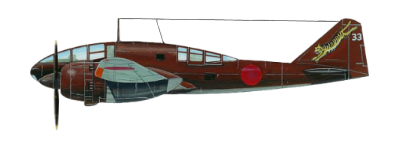 Ki-46
Ki-46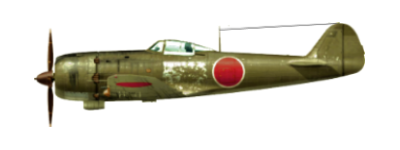 Ki-84 Hayate
Ki-84 Hayate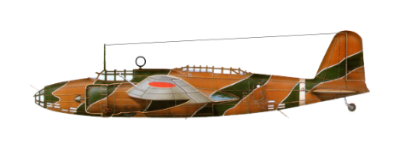 Ki-21
Ki-21 Ki-67 Hiryu
Ki-67 Hiryu


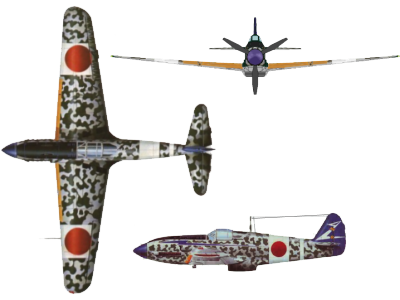
 Kawasaki Ki-61 'Hien'
Kawasaki Ki-61 'Hien'